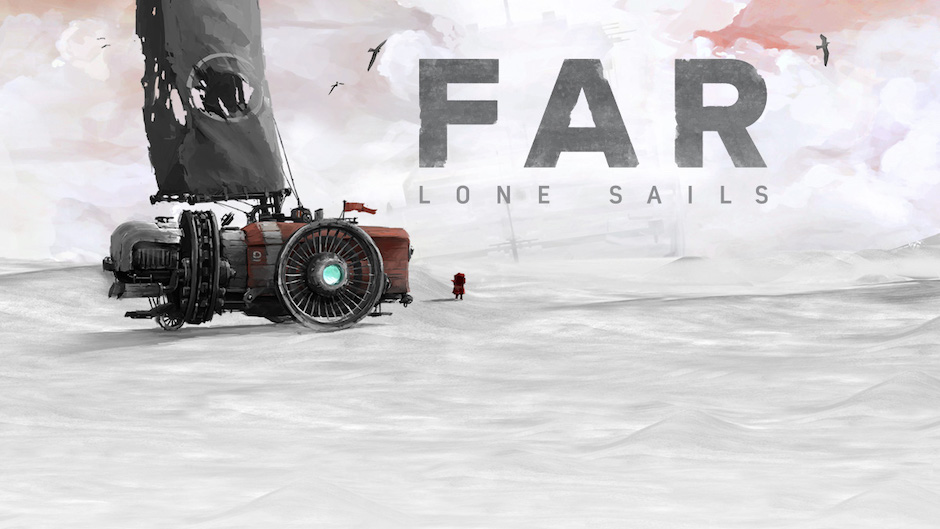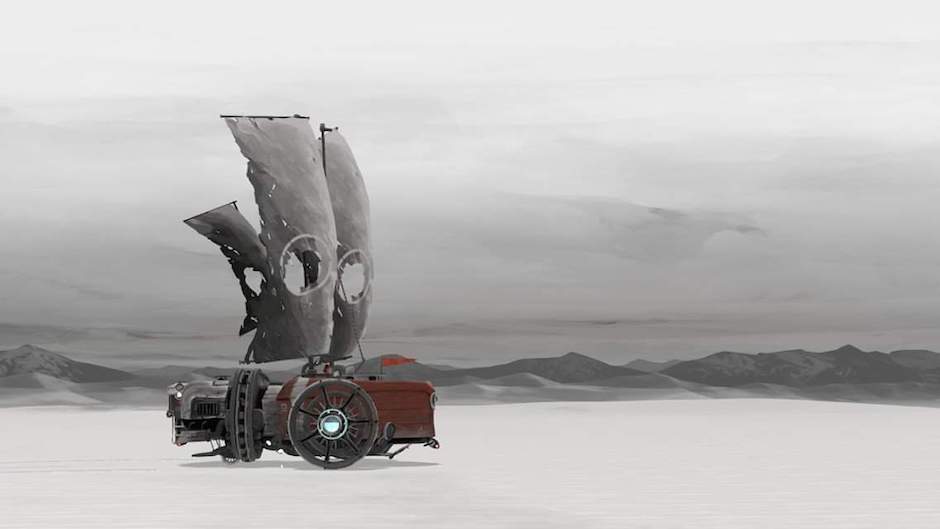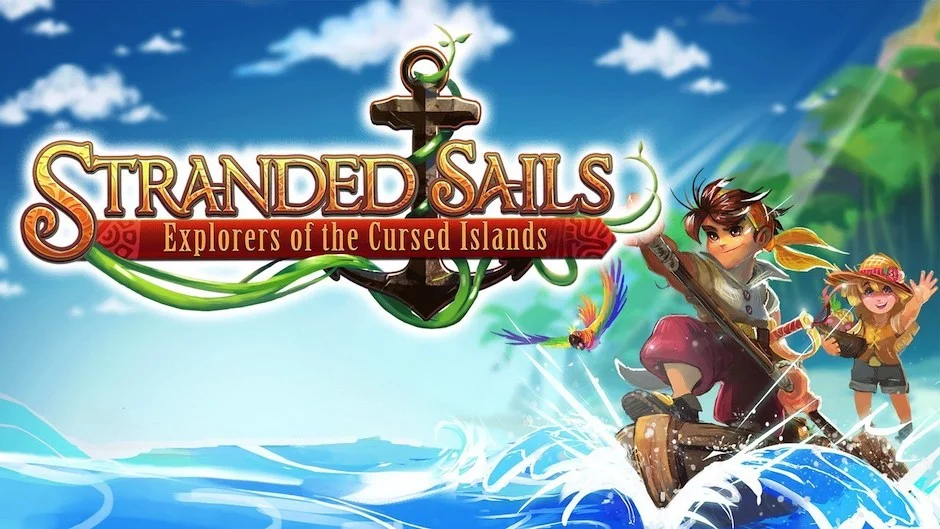Nintendo Switch code provided by Okomotive
FAR: Lone Sails is a gorgeous vehicle adventure game in which the player travels through an apocalyptic landscape. The protagonist’s only companion is the landship that must be cared for and upgraded as the game progresses. Indie game studio Okomotive hails from Zurich, Switzerland, but they’ve created a project that is universal in its reach. FAR: Lone Sails just recently released on the Nintendo Switch, but it’s available on all platforms, so there’s no reason to miss this experience. The game is the recipient of many prestigious awards and nominations in gaming, and I’m looking forward to the next project from this ambitious team. Without further ado, let’s dive into what makes FAR: Lone Sails a breathtaking journey.
Story
No narration accompanies the game, and you learn very little of the protagonist who traverses the land in their weathered vehicle. There are no cutscenes and few hints as to how the world deteriorated to its current state. The player must study the environment and glean what few details they can as their travels take them through new locations. The dilapidated buildings share glimmers of the past and the blighted land occasionally throws some cast-off items into your path. As the story doesn’t rely on exposition, the world of FAR: Lone Sails is accessible to everyone. And what’s more beautiful than any search for answers is the relationship, the bond between man and machine that forms as you tend to the landship that protects and transports you.
Gameplay
When you first enter the vehicle, the small corridors and mechanical pieces of the ship can seem daunting, but it quickly becomes manageable. Besides moving, there are really only two controls in the game, which simplifies the maintenance required on the vessel. To interact with objects, you grab them and carry them in your hands and all of the actions onboard can be accomplished with buttons. Buttons load the ship’s fuel, ignite the engine, regulate steam pressure, unfurl the sails, vacuum up debris from outside. The same mechanics apply to puzzles outside of your vehicle as well. It’s a barebones approach that works wonderfully. Because the control layout is scaled down, the gameplay never gets in the way of the experience.
But don’t assume that there will never be any complexity. As your journey takes you further into the dried-up sea and the unforgiving badlands, you will find upgrades to help your ship endure the challenges ahead. The more components that you add, the more that will break down and jeopardize the integrity of the vehicle. There are moments where you’ll dash back in forth in a mad frenzy to quell the fires. At times like these, the sparse mechanics really shine. The player relies upon the vessel, and an emotional connection forms between pilot and ship. It’s an anxious yet rewarding relationship.
Visuals
FAR: Lone Sails is stunning to look at. The bleak landscape is haunting, and as days pass you are introduced to the death of a world. There is no green. No vegetation that sputters up from the ground. All that’s left is dust and metal. The landship that rolls over the broken earth is straight from your steampunk fantasies, and the stark colors really burst out of your screen as you play. This is the first game I’ve played on the Nintendo Switch that made we consciously consider the screenshot button on my controller. I would feel my hands drift away from the buttons to gaze at the world beyond my ship. And I’d quickly capture the moment. It’s rare for games to rip me away from play, but FAR: Lone Sails succeeded at sucking me into the apocalyptic atmosphere. Any shot from the game could function as a beguiling background for your phone or computer. It’s a visual experience that you won’t soon forget.
Audio
The music of the game is seductive, and I often reached for the remote to increase the volume on my TV. Normally, I keep the sound at a respectable decibel, but FAR: Lone Sails hypnotizes with an enchanting soundtrack. It’s even available to stream, and I don’t doubt I’ll be listening to it from time to time. The game is full of peaceful melodies and stirring notes, and you realize that even in the grey nothingness the human spirit can endure. Little radios that you can hang on hooks in the ship underscore the importance of music.
Replayability
While the experience would be more or less the same with each playthrough, it’s likely that you would return to FAR: Lone Sails at some point to reconnect with the world and with the ship that guided you through the darkness and emptiness. The length of the game makes it possible to finish in one long sitting, but you might also want to relish the time and make it last. The adventure is far from the open-world epics that can sustain hundreds of hours of gameplay and numerous playthroughs, but it will still captivate you. Like stargazing, you’ll be able to lose yourself in another place upon occasion. But it’s not going to keep you occupied for days. Enjoy the journey while it lasts and dwell on what you’ve seen.
What It Could Have Done Better
My main complaint about FAR: Lone Sails was the length. I didn’t want the experience to end when it did. The game was long enough for me to develop a meaningful bond with the ship that I piloted across the wastes, but it cut short. I would have like several more hours in the company of my resilient machine. I can envision other environments to traverse that would have extended the experience. The art style and soundtrack were fantastic, so the opportunity to live in that world for a greater duration would have been appreciated.
Verdict
It’s a small price to pay and FAR: Lone Sails is an engrossing experience. While short, it sweeps you off your feet and gives you a battered ship to look after. You’ll be surprised at how much you come to care for it and for the determined traveler who captains it when the game concludes. A pleasure to look at and a joy to play.



























